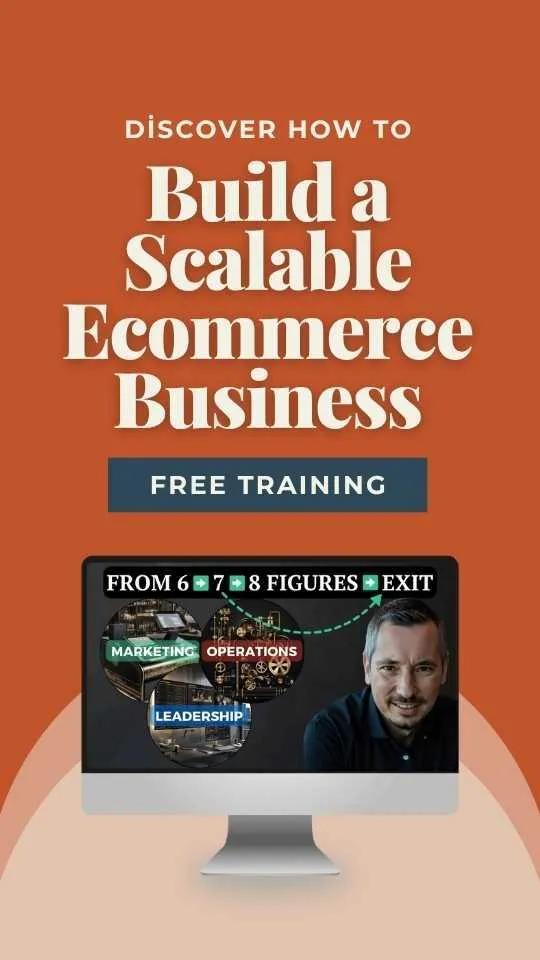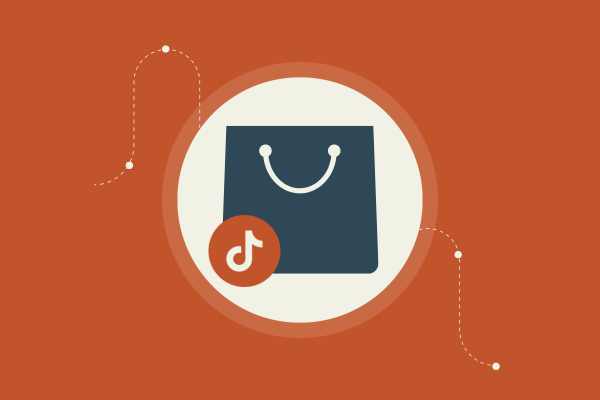How to Calculate Your Breakeven Point: Master eCommerce Growth
Success in eCommerce doesn't just happen. You need the right tools and knowledge to make it scalable. The break-even point is your compass for knowing when you cover all your costs, not a penny less or more. It's the magic number you want to hit to avoid losing money.
Getting to this point means knowing your fixed and variable costs.
Your eCommerce business can thrive with smart planning, and understanding this number helps you set realistic sales targets. When you do that, you're not shooting in the dark; you're aiming for growth.
Think about pricing strategies as keys to open the doors of profit. The break-even point guides you in setting those prices so you can analyze profitability and cash flow.
Markets change; stay ready by adapting your strategies to keep your business profitable.
Key Takeaways
Know your break-even point to plan effectively.
Smart pricing strategies can boost profitability.
Adjust to market changes to stay ahead.
Understanding the Break-Even Point
Knowing your break-even point is more than just crunching numbers. It’s about finding that sweet spot where your sales equal your costs. No profit, no loss. Just balance. This knowledge is crucial, especially in a scalable eCommerce business.
The Basics of Break-Even Points
Let's keep it simple. The break-even point is where your total sales cover all your costs. You got fixed costs, like rent or salaries. They don’t change with sales volume. Then there's variable costs, which depend on how much you sell.
To find the break-even point, you divide your fixed costs by the difference between your product’s price and its variable costs. This gives you the number of units you need to sell before you start making a profit.
Think of it as a launch pad. You're gearing up your business to rocket past break-even. Hit that point, and every sale beyond means profit in your pocket.
Fixed vs. Variable Costs
Fixed costs are like those friends who never change. They’re steady, always there. Rent, salaries, and equipment are fixed costs. They stay the same no matter how much you sell.
Variable costs are different. They’re like that one friend who’s always on the move. Costs of goods sold, shipping, and packaging rise and fall with sales volume.
Understanding these costs lets you tweak your pricing and production.
Finding balance between fixed and variable costs is key. For profitability, knowing these differences helps you make smarter, more strategic choices.
Keep an eye on your costs, and you’ll know exactly what it takes to break even and soar to profitability.
Calculating Your Break-Even Point
Want to know when your eCommerce business will start making money? You need to figure out your break-even point. This tells you how many products you need to sell to cover costs. Let's dive into how you calculate this magic number.
Break-Even Point Formulas
The break-even point is like a milestone. To find it, use this simple formula:
Break-Even Point in Units =
( \frac{\text{Fixed Costs}}{\text{Sales Price per Unit} - \text{Variable Cost per Unit}} )
For sales revenue:
Break-Even Point in Sales =
( \frac{\text{Fixed Costs}}{\text{Contribution Margin Ratio}} )
The contribution margin ratio is key. It's calculated by dividing your contribution margin by the sales price. This formula gives the number of units or revenue needed to cover all your costs.
Step-By-Step Calculation
Start with your fixed costs. These are costs that stay the same like rent or salaries. Let’s say it’s $10,000.
Next, find the sales price per unit, maybe $50, and the variable cost per unit, such as $30. Subtract the variable cost from the sales price. That’s $20 in this case.
Now, use the formula:
750 units =
( \frac{10,000}{50 - 30} )
You've got to sell 750 units to break even. For revenue, multiply the unit break-even point by the sales price. You're looking at $37,500 in sales.
Understanding Contribution Margin
Contribution margin is crucial. It shows how much money is made after covering variable costs. This is used to cover fixed costs and then profit.
It's calculated like this:
Contribution Margin = Sales Price Per Unit - Variable Cost Per Unit
If you know this, you can tweak sales strategies to optimize your business model. It’s a powerful metric for decision-making.
The higher the contribution margin, the less you need to sell to break even. It gives you an edge in understanding what really matters in your sales.
Setting Sales Targets
When scaling your eCommerce business, setting the right sales targets is crucial. It ensures you hit profit goals and maintain healthy margins. Let's dive into using your breakeven point and the impact of sales volume on profit.
Using BEP to Determine Targets
Your Breakeven Point (BEP) is where your sales revenue equals your costs. This number is essential for setting realistic sales targets. If you know how much you need to sell to break even, you can use that number to guide your sales goals.
First, calculate your fixed and variable costs. Add these to find your total costs. Then set your prices based on desired profit margins. Your BEP tells you how much you need to sell to cover costs.
Understanding your BEP helps in setting targets that ensure profitability. Say your BEP is 1,000 units per month. Aim higher to make a profit. If you aim to sell 1,500 units, you’re likely looking at a nice cushion above the break-even.
Check out this break-even point calculator to help with the math.
Impact of Sales Volume on Profit
Sales volume is the number of units you sell. It greatly impacts your bottom line. Higher sales volumes can lower your cost per unit, boosting profit margins.
As your sales volume increases, your fixed costs remain the same. This means each additional sale contributes more to profit, given that you've already covered fixed costs.
Think about it: once you've hit your break-even sales, every sale after is mostly profit. That's why pushing for a higher sales volume is crucial. It not only boosts sales revenue but also improves your overall profitability.
Pricing Strategies for Ecommerce
Pricing is key in ecommerce. The right strategy can boost your sales and maximize profit. Here’s how you can use pricing to your advantage and keep your business scalable.
The Role of Pricing
Pricing isn't just numbers. It shapes how your ecommerce business competes. Set prices too high and risk abandoned carts. Too low, and profit margins shrink. The sweet spot is key.
Think of it like this: your sales price per unit should cover costs and then some. We're talking rent, wages, ads—the works.
Keep it tight. A smart pricing strategy means knowing your market. It's about checking out the competition and understanding customer value. Use data—lots of it—to set your prices. Find that spot where you beat competitors but still profit.
Adjusting Prices for Profitability
You want profits that grow. That means your prices can’t just sit there. They need to flex. When costs change, like raw materials or shipping, adjust your prices.
Use dynamic pricing. This means tweaking your price based on market demand, stock levels, or competitor prices. Think about seasonal shifts or sales events—these are times to adjust.
Another trick is to focus on increasing the unit price while maintaining customer value. Bundle products or offer premium options. This way, you keep customers happy and boost your average order value.
Adjust with intent. Regular checks keep your ecommerce business thriving. Stay alert, stay profitable.
Analyzing Profitability and Cash Flow
You're in the game of eCommerce, and knowing your numbers is crucial. After you hit break-even, you need to track your profit and manage cash flow like a pro. Understanding these aspects ensures your business doesn't just survive but thrives.
Profit After Break-Even
Once you hit break-even, every sale adds to your profit. Knowing your profit margins is key here. This is the percentage of each sale that becomes profit after covering costs. Keep a sharp eye on your profit and loss statements to understand where you stand.
Your margin of safety is about knowing how much sales can drop before you dip back below break-even. It’s a buffer, so aim to boost this cushion.
The bigger your profit margins, the easier it is to weather tough times. Keep costs down and aim for high-margin products. Focus on what sells best and cut items that don't move.
Maintaining Positive Cash Flow
Cash flow is the lifeblood of your business. Profit is important, but cash flow is what pays the bills. You need to keep more cash coming in than going out.
Track it like a hawk with your financial statements. You can be rich on paper and broke in reality, so manage wisely. Keep an eye on payment terms with suppliers and customers.
Speed up receivables and delay payables without harming relationships. A positive cash flow means you can invest in growth. You can buy more stock, hire more people, or beef up marketing.
Build up reserves for a rainy day. You want a safety net for unexpected expenses or market shifts. Cash flow management isn't just about survival—it's about seizing opportunities.
Multi-Product Break-Even Analysis
When running a scalable eCommerce business, figuring out the break-even point (BEP) for each product is key. Knowing how to analyze both the individual product break-even and the total revenue helps you make smarter business choices.
Calculating BEP for Multiple Products
To calculate the BEP for multiple products, you'll first need to know the fixed costs and variable costs per unit. Your fixed costs are expenses that don't change, like rent or salaries. Variable costs, on the other hand, change based on how many units you produce.
Once you’ve got that, move on to the selling price for each product. With these numbers in hand, compute the contribution margin. It's simple: subtract variable costs from the selling price. For multiple products, you'll need a weighted average contribution margin. Basically, it’s an average that considers how much each product contributes to overall sales.
The formula looks like this:
Weighted Contribution Margin = (Product A's Margin Sales Mix %) + (Product B's Margin Sales Mix %) + ...
Finally, divide your total fixed costs by this weighted average to find out how many units you need to sell to break even across all products.
Analyzing Total Revenue
Once you know your break-even points, dive into the total revenue side of things. Each product contributes to your total revenue differently. So, keep your eye on the revenue per unit. This helps you get a grip on how each product affects your bottom line.
To boost total revenue, focus on products with higher contribution margins. This means they make more money for you even after covering their variable costs. You might also want to adjust your product mix. This is the percentage that each product contributes to sales.
Always watch your total revenues. Knowing how much you need to break even helps plan better and drive more profit. Doubling down on high-margin products can maximize your eCommerce success.
Adjusting to Market Changes
Change is the name of the game, especially in eCommerce. Whether it's sudden cost shifts or a need to tweak your strategy, staying flexible will keep you ahead.
Handling Cost Fluctuations
Costs never sit still. Shipping costs soar, production costs dive. You gotta ride the wave, not drown. Start by keeping an eye on your fixed and variable costs. If shipping costs spike, see where you can save elsewhere.
Maybe renegotiate with suppliers or switch to a different shipping service. Keep your margin contribution strong. If your selling price stays the same, but costs rise, profits shrink. Consider adjusting prices. Just don’t scare off your customers. Test price changes and watch the outcome. Be nimble and quick, like a business ninja.
Adapting the Business Plan
Your business plan isn’t written in stone. It’s a living document. As market conditions change, your plan should, too. For example, if production processes evolve, adapt them into your strategy. Dive deep into analyzing real-time data.
Detect trends and shift your focus to capitalize on them. If a new product line is eating into margins, rethink its place in your lineup.
Sweat the small stuff. Look into operations and find inefficiencies. Tiny tweaks can create big wins. Refresh KPIs to stay aligned with your goals. Your plan should be flexible, but ALWAYS future-focused.
Real-World Examples
Understanding the break-even point is crucial for your eCommerce success. This section dives into detailed real-world examples that illustrate how calculating break-even helps businesses make smart decisions.
Case Study Analysis
Imagine you own an online clothing store. Your fixed costs - warehouse, staff, and site maintenance - are $20,000 a month. Each item you sell brings in $50, but costs you $30 to make. To find your break-even point, use this formula:
Break-Even Point = Fixed Costs / (Selling Price per Unit - Variable Cost per Unit)
Plug in your numbers:
Break-Even Point = $20,000 / ($50 - $30)
That means you need to sell 1,000 units to break even. Knowing this number helps you set sales targets confidently.
Running a sale? Calculate if you can afford the discount and still cover costs. This case study highlights how precise numbers can lead to precise decisions.
Break-Even in Action
Let's look at a coffee shop example. Your fixed costs are $10,000 every month. Each cup of coffee sells for $5 and costs $2 to make.
Using the break-even formula, here's what it looks like:
Break-Even Point = $10,000 / ($5 - $2)
You need to sell 3,333 cups monthly to cover all your expenses and not lose money. Knowing when you hit this number means any sale after is profit.
This example isn't just about numbers. It's about being strategic. You can use this data to adjust sales tactics and pricing to increase profitability in your eCommerce business. These insights can be your roadmap to scaling smartly.







